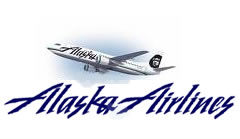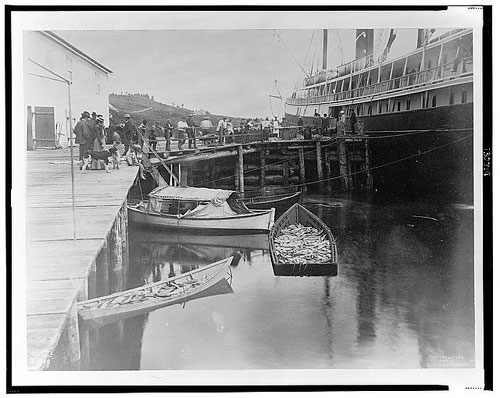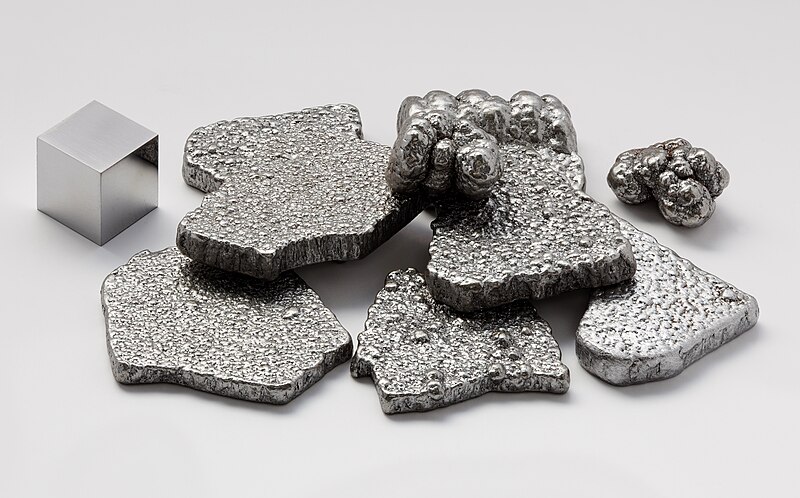Essential Questions:
Explain how Alaska's location was considered 'strategic' during World War II. What were the war activities/events that supported the perspective of 'strategic' Alaska?
The websites and resources provided in this week's module were phenomenal in underlining Alaska's involvement during WWII and how it was 'strategic'. The number one explanation for Alaska's importance during the war is explained by its proximity to Asia. Attu, the westernmost island on the Aleutian chain is only 650 miles away from a Japanese military base (
Alaska at War). That is about 50 miles shy of a straight shot from Anchorage to Ketchikan. When putting it into perspective, that is extremely close when thinking of distance between two battling countries. With the close proximity to Asia, the United States could also reach possible allies, like Russia.
 |
ALSIB- Alaska Siberia 1942-1945
Fairbanks, Alaska
Courtesy of Alexander Dolitsky-Alaska Siberia Research Center |
Alaska was a prime example of the lend-lease program. As mentioned in the module, around 8,000 planes traveled up from the lower 48 states, skipped through Canada, and up to Alaskan military bases, such as Fairbanks. In Fairbanks, Russian pilots trained and flew the planes over the Bering Sea to help aid on the front between Germany and themselves and other locations. Resources, other than planes, were also sent oversees.
Not only did the U.S. find Alaska's location important for enhancing military positions, but so did Japan. They knew how close the islands of Attu and Kiska were and how accessible Japan would always be if they themselves didn't push east, resulting in one of the deadliest battles during the Aleutian Campaign.
The bases that were established in Alaska were described as smaller, but created diversions away from other parts of the Pacific, such as Pearl Harbor. Once in Alaska, however, it came down to survival of the fittest. Who could survive the nasty weather conditions at sea and on land? I think the U.S. used the climate as part of their strategy, even though they were greatly impacted as well.
Alaska served as a vast land that was underestimated and forgotten as part of WWII. On the AK history and culture website, Brigadier General William "Billy" Mitchell summed up the importance of Alaska.
[
It does not take much...he who holds Alaska holds the world..]
Examine Question:
Describe the major events in the Aleutian Campaign of World War II.
-
1940s- U.S. surveys Aleutians for future military base sites.
-
June 1941- military numbers continue to increase, 5,500 navy in Dutch Harbor
-
Spring 1942- suspecting Japanese to strike Aleutians
 |
Japanese advancement on Aleutian Is.
Aleutian Islands, The U.S Army Campaigns
of WWII |
-
May 1942- U.S. Navy increases military support, sends 5 cruisers, 11 destroyers, and 36 smaller crafts to Alaska
-
June 1942-bombing of Dutch Harbor, Japanese occupation of Attu and Kiska Islands
-
Mid-September 1942- U.S. B-24 bombers attack Kiska
-
February 1943-last air battle over Aleutian Islands
-
March 1943-"Battle of the Commander (Komandorski) Islands" U.S Navy vs. Japanese ships, largest water battle during campaign
-Japanese efforts to add supports to Kiska fail.
-
May 11th-29th, 1943-U.S. attacks Japanese at Attu, by land and sea.
-U.S army troops caught off guard by harsh weather and climate
-
July 1943- U.S 'preinvasion bombardment' on Kiska
-
August 24th 1943, Aleutian Islands Campaign ended after Kiska islands declared 'secure' by Major General Charlers H. Corlett of the U.S. Army.
 |
Capture of Attu
Aleutian Islands, The U.S. Army
Campaigns of WWII |
The Aleutian Campaign stretched from 1941 up until August 1943. It stood second, behind the War of 1812, as the only time in U.S. history where another country has occupied parts of the U.S. Upon the first signs of Japanese attacks on Dutch Harbor, Americans were ordered to evacuate the soon-to-be war zone. Many residents ended up in Southeast Alaska; 800+ estimated to have been evacuated. Homes and towns were then burned to prevent the Japanese from being able to use anything.
During the campaign, weather was another vicious enemy. Even though the military forces may be at the top of their game, too many were not prepared to withstand against freezing temperatures, debilitating winds, and treacherous seas. The battle for Attu is a prime example. Over a two week period, numbers for the U.S. and Japanese military greatly decreased. War zone fatalities played a big hand, but the extreme conditions of the Aleutians could kill the toughest men. According to the
Aleutian Islands publication, the battle for Attu is considered one of the most deadliest fights in the Pacific, Iwo Jima being first.
 |
Capture of Kiska
Aleutian Islands, The U.S. Army
Campaigns of WWII |
It was interesting to read about the U.S. military's approach for taking back Kiska, seeming more like being a safe than sorry, learning experience. What I mean by this is declaring a 'preinvasion bombardment' on Kiska, releasing 424 tons of bombs and heavy fire, the U.S. military did cause the Japanese to flee. However, after hearing the Japanese had left in July, the U.S. continued on through August with the airstrikes and the original plan. Were the Japanese really gone? Rear Admiral Thomas C. Kinkaid stated the continuance as being good for training purposes and to proceed. By the time Kiska was reclaimed at the end of August 1943, it had cost $150-$170 million. I know war is very costly, and I'm curious to where this event stands in comparison to other battle/war costs in our history. I'll look it to it...
The information I based my timeline from can be found on the
Aleutian Islands U.S. Army publication or on the AHCS-
Alaskans and the World website. After reading these 2 publications I found it easiest to understand all the information and compare dates in the form of a timeline.
Evaluation:
This was probably one of my favorite modules to learn about. The information and resources provided really helped provide a well informed story of Alaska's involvement during World War II. Looking at Alaska as an outsider from the lower 48, I had no idea of how the state was used by the U.S. to create a front against Japanese forces. There is so much you hear about WWII and never once have I heard anything about Alaska! I really enjoyed the photos and the maps from all the sites. As you can see I included the maps in my module because I felt these were the most informational for understanding proximity and strategies. I enjoyed reading the
Aleutian Islands- U.S. Army Campaigns of WWII,
World War II in Alaska and the
Alaska at War ebook. Very fun week!
Blog Comments:
I very much enjoyed reading
Whitney's module VII blog. It was visually appealing and I loved her list of all the recreational activities there are in Alaska. My mom is a 5th grad teacher in Idaho and has followed the Ididarod race for years with her students. I've always wanted to watch a part of the race. Also, I love how there is so much to do in Alaska. You can never say you're bored!
I agree with
Christy that it takes more than aspect to shape an area and result in settlements. Thank you for providing all those that have influenced Prince of Wales (POW) :)
Niki did a great job with her description Sheldon Jackson's role in Alaska's education system. I've heard of the museum in Sitka. I was disappointed I didn't make it there when visiting last Alaska Day. It will be on my list for next time!







































